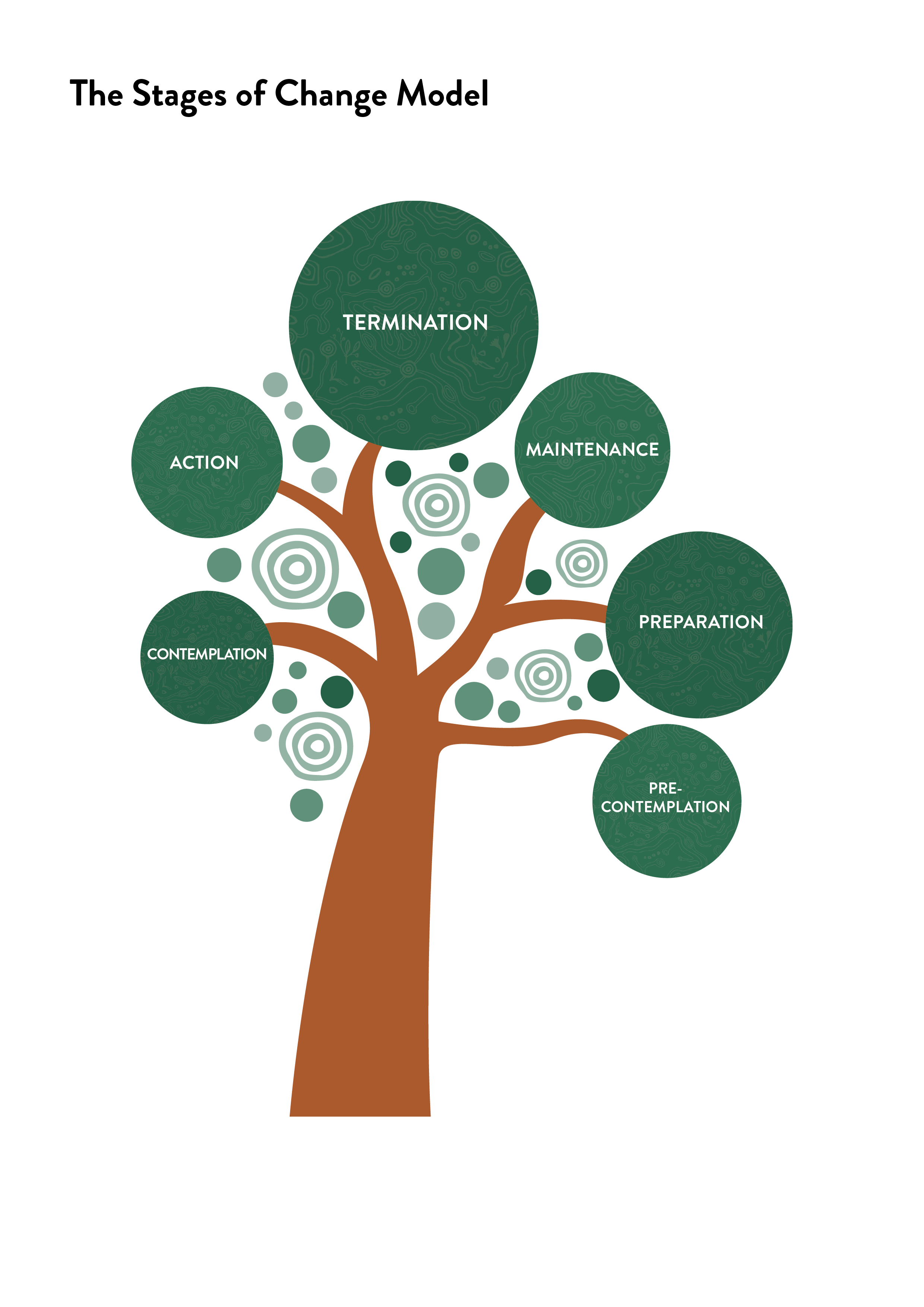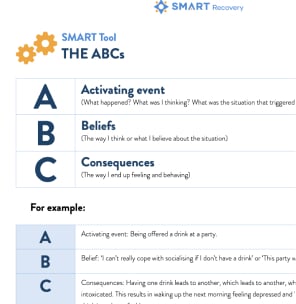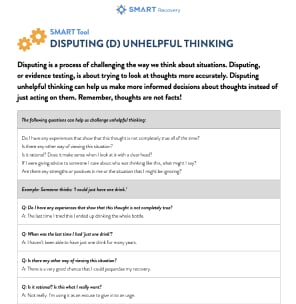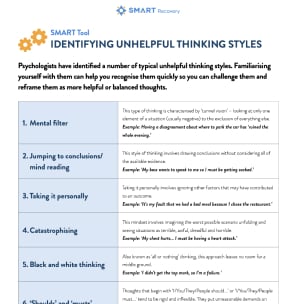The Stages of Change
Tool Overview
Pre-contemplation, Contemplation, Preparation, Action, Maintenance, Termination.
When To Use This Tool
The Stages of Change Model
How To Use This Tool
-
Pre-contemplation (not thinking about changing)
At this stage, you may not feel that you have a problem and that you are totally in control of your present situation. You do not see that there is a problem and you may feel that other people are just nagging you or making an issue over nothing. -
Contemplation (thinking about changing)
You may start thinking that maybe there is a problem with your behaviour. You start noticing some negative consequences of your addictive behaviour (such as an increase in hangovers, missing work, not having enough money for rent, health problems etc.). You might be feeling ambivalent about your addictive behaviour - ‘I know I should stop but do I really want to ?’ -
Preparation (getting ready to change)
You now see that your behaviour is causing you quite a few difficulties and upsets. There are more problems and few benefits to your addictive behaviour. You are now preparing to make some changes. You may start looking for help (counselling, detox, rehab, support groups, nicotine patches etc.) and start setting some goals. Again, you may feel worried about changing your ways and what the future holds for you. -
Action (making the change)
You are now putting your plans into action. You are using the tools of the program. You are more aware of what is working best for you and also what you need to be careful of. Hopefully, you are seeing some benefits of your changed behaviour. -
Maintenance (sticking to changes)
You are continuing with your newly changed behaviour. Now that you have achieved the goal you have set for yourself, you may now need to add new goals. You may feel more confident and happier in your life. This period can also sometimes be tricky as you may feel that because you have maintained your goal for the past three to six months, you now feel that you can have a try at your old behaviour and be totally in control of it (e.g having a drink after being abstinent for months). You need to be careful about lapsing or relapsing.LAPSE (Slipping-up)/
RELAPSE (Returning to old behaviours)- A lapse is when you have a slip - up which doesn’t last for very long.
- You may return to your old habits once or twice but then pull up.
- A relapse is when you go back to your old patterns of addictive behaviour and unhealthy lifestyles for an indefinite period.
-
Termination (complete change)
You have done the work! You have stopped unhelpful habits and replaced them with healthier behaviours and ways of coping. Enduring behaviour change stems from practice and sticking with it. But remember, any temporary slip - ups or recycling into old habits are normal and part of the process of change. If you become self - critical, remind yourself that this approach doesn’t help and instead learn from your mistakes in order to get back on track. Failing better is a skill too.
Helpful Links
Related Tools
View all- Tool
Lifestyle Audit
When we slow down on a behaviour of concern, it can leave a gaping hole in our lives. Often, we find that we have a lot more free time, which used to be filled with activities related to our old behaviour. Also, we may no longer associate with the same group of friends.
- Tool
Setting SMART Goals
It’s important to make sure goals are SMART: Specific, Measurable, Achievable, Realistic and Timed.
- Tool
Weekly Planner
Once you have set some specific goals and broken them down into smaller, specific steps, the weekly planner can be useful for keeping these goals on track and ensuring that you are taking active steps towards achieving them.
Tool Overview
The ABC Model is a good way of understanding how we can help change our feelings and behaviour by challenging our thinking.
When to Use This Tool
The ABC Model is a good way of understanding how we can help change our feelings and behaviour by challenging our thinking. It helps us uncover beliefs that are not helping us /contributing to the behaviour we are trying to change.
This exercise may be done in the group setting but can also be very useful for participants to look at between meetings.
How To Use This Tool
When working with urges: To analyze a lapse/relapse or to develop coping statements for an anticipated lapse/relapse.
In the event of a lapse, the question to ask is not “What made me do that”, but rather, “How did I talk myself into it?” It is not the urge (A) that causes the lapse (C). It is our beliefs (B); our irrational self-talk.With emotional upset:
The ABC Model can also be used to work with emotional upset or frustrations that may occur at any point in the recovery journey. The ABCs allow us to discover our unhelpful beliefs which contribute to emotional upsets. Disputing helps us eliminate our irrational thinking so we can both feel better and do better. In SMART Recovery we teach that we feel the way we think; it’s not unpleasant events that disturb us, it’s the way we think of them. By changing our thinking, we change how we feel.Identifying and Disputing Unhelpful Thinking.
Disputing is a process of challenging the way we think about situations. It’s about trying to look at thoughts more accurately. Disputing unhelpful thinking can help us make more informed decisions about thoughts instead of just acting on them. Balanced thinking leads to effective new beliefs.



